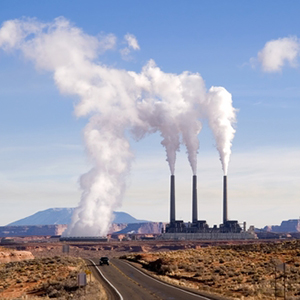WHAT WE’RE WORKING ON
Mercury pollution is a core issue for Moms Clean Air Force. While the Mercury and Air Toxics Standards (MATS) that were first implemented in 2012 have been largely successful, there are still many coal plants that release significant amounts of mercury, putting families and communities across the U.S. at risk. Most of the worst remaining plants burn lignite coal, an especially polluting form, and are located in Texas and North Dakota.
On April 25, 2024, EPA Administrator Michael Regan announced long-overdue updated MATS. The previous May, dozens of Moms staff and members gave testimony in support of these protections at EPA’s virtual public hearing; thousands more submitted written comments to the docket. We are thrilled that the new protections will address emissions from the burning of lignite coal and require continuous emissions monitoring for coal plants. Now, we are turning our attention to defending MATS from attacks by Congress and ensuring the new rule is implemented.
RELATED RESOURCES
WHY WE CARE
Mercury is a naturally occurring, highly toxic heavy metal. In the US, the biggest source of mercury pollution is coal-fired power plants. Mercury occurs naturally in coal in small quantities, and when coal is burned for energy, it’s released into the air. From there, mercury falls onto rivers and lakes, entering the food chain.
In waterways, microbes convert mercury into methylmercury, which accumulates in fish. Methylmercury concentrations in fish can be up to 100 million times greater than the concentration in water. When humans eat fish, mercury gets into our bodies. There is no safe level of mercury consumption.
HEALTH IMPACTS
Mercury can harm human health in a variety of ways. It’s especially dangerous for developing babies and children’s brains. When pregnant women eat contaminated fish, mercury can cross the placenta and impact children’s ability to walk, talk, read, and learn. It can also cause behavioral issues. Mercury is linked to cardiovascular problems too, including increased risk of heart attacks.
In the US, the biggest source of mercury pollution is coal-fired power plants.
ENVIRONMENTAL JUSTICE
The majority of the top mercury-emitting coal-fired plants today are located within 50 to 100 miles of large population centers, some in areas already contending with poor air quality. Black, Brown, low-income, and Indigenous populations bear a disproportionate burden of their environmental harms and adverse health impacts. An outsize number of Black people in the United States live within 30 miles of a coal-fired power plant.
In addition to living closest to smokestacks, some communities are at higher risk for ingesting mercury as they traditionally eat more fish than others. Tribal communities are among the highest risk groups for mercury contamination from fish consumption.
BACK STORY
Moms Clean Air Force fought hard for MATS to be implemented back in 2012. MATS has proved to be an effective pollution prevention program, protecting pregnant woman and babies from mercury as well as other poisonous emissions: lead, arsenic, dioxin, acid gases, and cancer-causing chromium, nickel, and selenium. MATS has helped ensure 90% of the mercury from coal burned in power plants doesn’t get released into our air. EPA estimates that MATS saves up to 11,000 lives and prevents thousands of heart attacks, asthma attacks, and hospital and emergency room visits yearly.
The economic benefits of MATS are equally substantial: an estimated $90 billion a year. Utilities have found implementing MATS less expensive than predicted, and polluting coal plants that were too old and dilapidated to upgrade with the “scrubber” technology that curbs emissions were instead shut down. This is a big win against climate change, not just mercury pollution.
More Articles and Resources
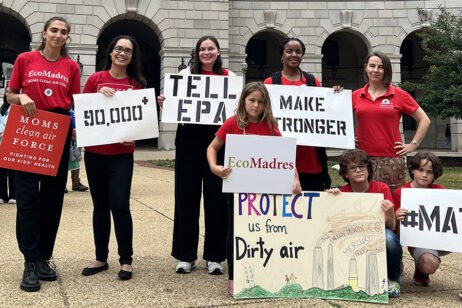
Why EPA's New Mercury Protections Matter to Moms
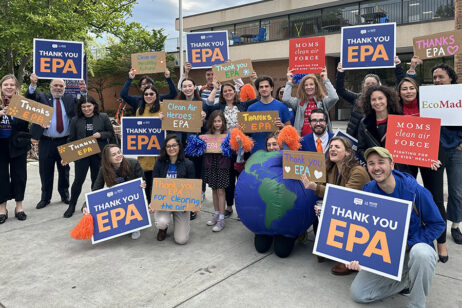
Sweeping Power Plant Pollution Safeguards Put Children’s Health First
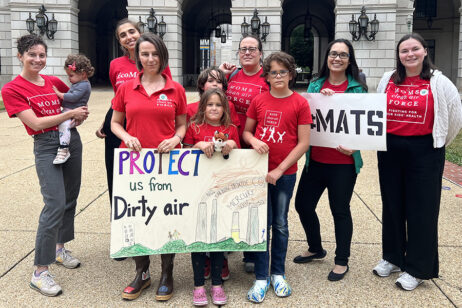
Now Is the Time to Protect Children From Mercury
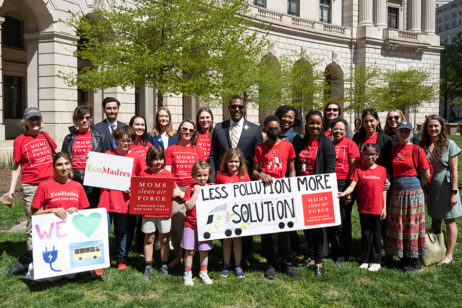
What EPA Did for Clean Air in 2023

Meeting the Moment: How Moms Are Fighting for Seven Important EPA Rules

Mercury Does Not Belong in Our Children's Lunchboxes

Strong Protections in the Fight Against Mercury Are Possible!

EPA’s Proposal to Limit Emissions From Power Plants Is NOT "Drastic," "Stringent," or Impossible
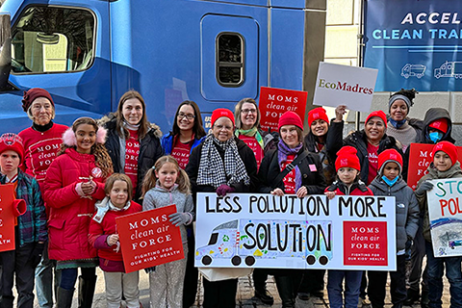
Groundbreaking EPA Report on Climate Change and Children’s Health

Earth to Mom: Keep Going. Keep Fighting. Keep Loving.

From Coal to Table: Protect Your Family From Mercury Pollution

EPA Administrator Regan Announced Stronger Mercury and Air Toxics Protections

Mercury 101

Heavy Metals Don't Belong in Baby Food
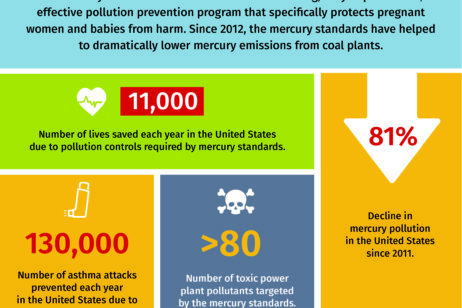
Mercury Pollution in the United States

How Mercury Poisoning Works
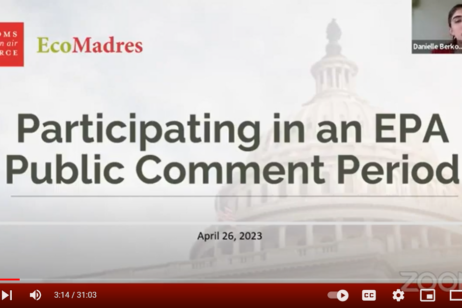
EcoMadres EPA Public Participation Workshop
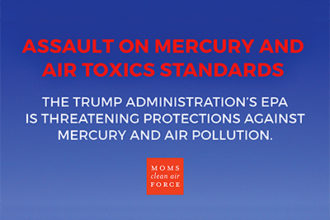
Assault on Mercury and Air Toxics Standards
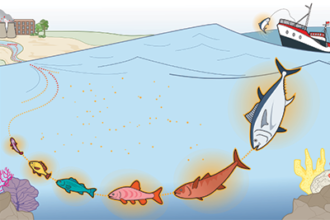
Cómo actúa el envenenamiento por mercurio
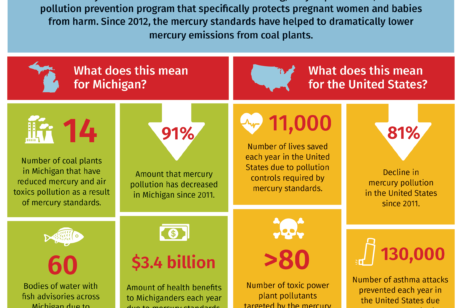
Mercury Pollution in Michigan

Mercury Pollution in the Great Lakes Region

Clean Air Action Guide

Mercury Pollution in Tennessee
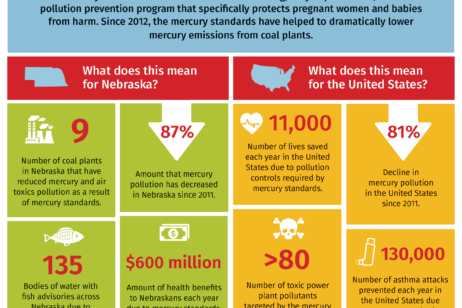
Mercury Pollution in Nebraska

Testimony: Patrice Tomcik, EPA’s Proposed Mercury and Air Toxics Standards, May 9, 2023

Testimony: Liz Hurtado, EPA’s Proposed Mercury and Air Toxics Standards, May 9, 2023

Testimony: Vanessa Lynch, EPA’s Proposed Mercury and Air Toxics Standards, May 9, 2023

Testimony: Karin Stein, EPA’s Proposed Mercury and Air Toxics Standards, May 9, 2023

Testimony: Melody Reis, EPA’s Proposed Mercury and Air Toxics Standards, May 9, 2023

Testimony: Ida Sami, EPA’s Proposed Mercury and Air Toxics Standards, May 9, 2023

Testimony: Michelle Uberuaga, EPA’s Proposed Mercury and Air Toxics Standards, May 9, 2023

Testimony: Shaina Oliver, EPA’s Proposed Mercury and Air Toxics Standards, May 9, 2023

Testimony: Laurie Anderson, EPA’s Proposed Mercury and Air Toxics Standards, May 9, 2023

Testimony: Rachel Meyer, EPA’s Proposed Mercury and Air Toxics Standards, May 9, 2023

Testimony: Jennifer Cantley, EPA’s Proposed Mercury and Air Toxics Standards, May 9, 2023

Testimony: Emily Pickett, EPA’s Proposed Mercury and Air Toxics Standards, May 9, 2023

Mercury 101

Heavy Metals Don't Belong in Baby Food

Mercury Pollution in the United States

How Mercury Poisoning Works

Why EPA's New Mercury Protections Matter to Moms

Sweeping Power Plant Pollution Safeguards Put Children’s Health First

Now Is the Time to Protect Children From Mercury

What EPA Did for Clean Air in 2023

Meeting the Moment: How Moms Are Fighting for Seven Important EPA Rules
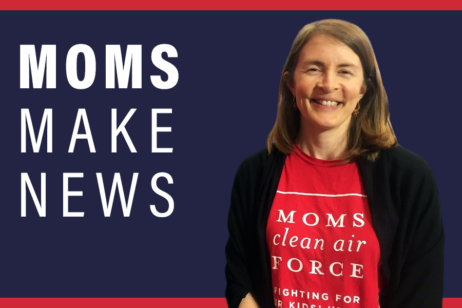
Climate Change Turns Up the Heat: Moms Make News

Mercury Does Not Belong in Our Children's Lunchboxes


